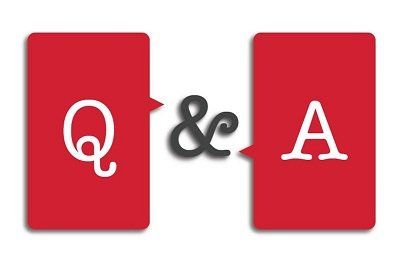Q&A: How to Grow a Bigger Audience Through Social Media?
As you may know, I love helping businesses grow on purpose and one of the ways I do this online, is by offering my advice through Q&A forums. Here are five recent questions that I’ve answered and I hope you can take away some nuggets that will help you.
Q: Robert ask: Currently self-publishing my crime fiction novels but would like to find representation to discuss publishing conventionally. Any ideas?
A: Hey Robert, Yes I have ideas! As an aspiring author you need to make sure you’re approaching a literary agent with the right things in place. Without question you’ll need to establish a platform , first. The type of platform I’m talking about is the one that gives the ability to influence a group of people that’s large enough to make publishing a book less of a financial risk. Some call it a platform, a database, or a following on social media, you must have someone listening in order to make an impact of any kind. So I recommend you start audience-building now and you’ll have any publisher and agent wanting to work with you.
Q: Olabisi ask: How do you introduce a brand new product in a saturated market even when your niche is a great one?
A: Hey Olabisi, You need to create a solid marketing plan for doing this. If you don’t have the proper components working together then your market penetration will fail. Here’s a place where you can find a business plan with a marketing plan inside of it. https://indispensablemarketing.com/resources/
Q: Gary says: I’m relatively new to direct sales with Comcast whats a better way to generate sales?
A: Hey Gary, I’m going to keep this short and sweet. I would figure out how to be this integral member of the community in your local area. Volunteer to be the neighborhood watch, help out a local church, volunteer to help non-profits, become a board member, serve as a mentor, etc. The point is that over time you want the people you meet to trust , like and know you enough that they want to do business with you.
Q: Keo ask: What are some good ideas for a blog targeting teens?
A: Hey Keo, I would be a very niche blog. I would really try to figure out what type of teen you’re targeting, because if you try to make a blog for every teen, it will be for no teen. Start reading the information they read and listening to what they listen to. This will give you some blog ideas that would engage the teens you’re targeting. I also would participate in conversations with them online. Once you get into the trenches you’ll know what to write about.
Q: Thomas ask: Does anyone have any ideas on how to grow a bigger audience through social media (ie. Twitter, Facebook, etc.)?
A: Hey Thomas, To grow your audience you must focus on three things: Being Generous; Other-centered; and Helpful. Create and publish remarkable content on your stage. Share connections, resources, your time, expertise, etc. Teach workshops, teach classes, help people achieve their goals , do it reliably and repeatedly, so that over time people have an interest in helping you achieve your goals.This is how you grow a bigger audience. You build an audience , not buy one.
Question: What would your advice be to one of these questions?





